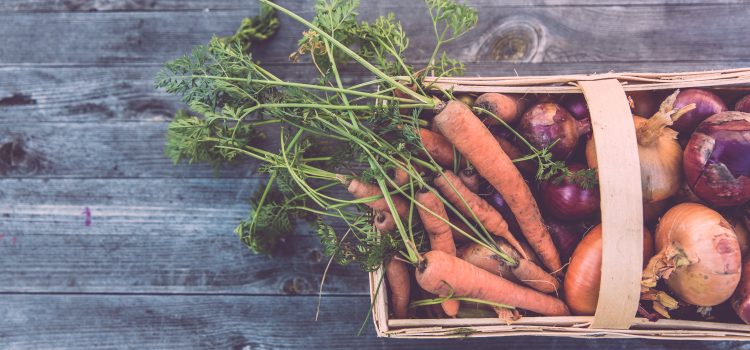
Do you ever wonder if the fruits and vegetables you’re eating are as nutritious as they used to be? It’s a valid concern, as studies have shown that the nutritional value of these foods has been decreasing over time. But why is this happening? And what does it mean for our health? In this blog post, we’ll take a closer look at the diminished nutrition values in fruits and veggies, explore possible causes behind this trend, discuss its implications for our well-being, and offer tips on how to mitigate this problem. So sit back, grab a snack (maybe not a fruit or veggie just yet), and let’s dive into the world of produce!
The decreasing nutritional value of fruits and vegetables
The decreasing nutritional value of fruits and vegetables is a growing concern among health-conscious individuals. Studies have shown that the nutrient content in produce has been declining over the past few decades. For example, one study found that broccoli grown in 2003 had only half as much calcium as broccoli harvested in 1950.
This decline can be attributed to several factors, such as soil depletion, modern farming practices, and genetic modifications. Soil depletion occurs when crops are grown repeatedly on the same land without proper nutrient replenishment. This leads to decreased mineral and vitamin levels in the soil, which is then passed on to the plants.
Modern farming practices also contribute to this problem by relying heavily on chemical fertilizers and pesticides, which can alter a plant’s nutrient profile. Genetic modifications may also play a role in reducing nutrition values since crops are often bred for characteristics such as size or shelf life rather than nutrition.
These factors contribute to diminished nutritional content in our food supply. It’s important for consumers to understand these issues so they can make informed decisions about their diets and take steps towards mitigating this problem through various means such as organic gardening or choosing locally sourced produce that hasn’t traveled long distances before reaching your plate
The possible causes of this decline
There are several potential causes behind the declining nutritional value of fruits and vegetables. One major factor is modern agricultural practices, which often prioritize yield and appearance over nutrition. This means that crops may be grown in nutrient-poor soil or harvested before they have fully ripened in order to meet demand.
Another culprit could be transportation and storage methods. Fruits and vegetables may travel long distances or sit on shelves for extended periods of time, causing them to lose vital nutrients. Additionally, cooking methods can impact nutrient levels as well; overcooking or boiling produce can cause significant loss of vitamins and minerals.
Climate change could also play a role in diminished nutrition values by affecting soil quality, crop yields, and plant growth patterns. Pesticides and other chemicals used in farming practices may also contribute to declining nutrient levels.
It is clear that there are numerous factors at play when it comes to the decreasing nutritional value of our produce. It’s essential that we continue exploring ways to combat this problem through sustainable agriculture techniques and mindful food choices.
The implications for our health
The decreasing nutritional value of fruits and vegetables doesn’t only affect the taste or appearance of these foods. It also has profound implications for our health. Without enough vitamins, minerals, antioxidants, fiber, and other beneficial compounds that fruits and vegetables provide, our bodies may not function optimally.
For instance, a lack of vitamin C can weaken our immune system and increase the risk of infections and chronic diseases. A deficiency in folate can impair fetal development during pregnancy and increase the incidence of birth defects. Insufficient potassium intake can contribute to hypertension (high blood pressure) which is a major risk factor for heart disease.
Moreover, some studies suggest that eating less nutritious fruits and vegetables may lead us to compensate with more calorie-dense but nutrient-poor foods such as refined grains, added sugars, saturated fats or processed meats. This imbalance could promote weight gain, inflammation and metabolic disorders like diabetes.
In addition to physical health consequences are mental ones too – deficient nutrients have been linked with poor cognitive performance including memory loss.
We should pay attention to what kinds of fruits & veggies we’re consuming in order to maintain healthy diets necessary for optimal bodily functions across all aspects!
What can we do to mitigate this problem?
One of the most effective ways to mitigate the diminishing nutritional value of fruits and vegetables is by opting for locally grown produce. Locally sourced fruits and veggies are often harvested at their peak ripeness, which means they have a higher nutrient content.
Another strategy is to consume a variety of colorful produce. Different colors indicate different nutrients, so incorporating a rainbow of fruits and vegetables into your diet can help you maximize your nutrient intake.
It’s also important to consider how you prepare your produce. Overcooking or boiling can cause some nutrients to leach out, so try steaming or lightly sautéing instead.
If possible, growing your own produce is another excellent option. This allows you to control the growing conditions and ensure that your fruits and veggies are as fresh as possible.
Consider supplementing with high-quality vitamins and minerals if needed. While whole foods should always be the foundation of a healthy diet, supplements can help fill in any gaps in nutrition.
By taking these steps, we can all work towards ensuring that our diets are as nutritious as possible despite the decline in overall nutrient levels in our food supply.
Conclusion
The nutritional value of fruits and vegetables has been decreasing in recent years due to various reasons such as environmental factors, farming practices, transportation, and storage. This decline can have serious implications for our health if we don’t take action to mitigate this problem.
However, there are things that we can do to ensure that we’re getting the most out of our produce. We should try to buy locally grown fruits and vegetables when possible because they’re likely fresher and have traveled fewer miles than those shipped from far away. It’s also important to consume a variety of colorful fruits and vegetables regularly as each color provides different essential nutrients.
Additionally, growing your own produce or supporting local farmers who use sustainable farming methods could be another way to make sure you get fresh nutrient-dense food on your table while helping the environment at the same time.
By understanding these issues surrounding diminishing nutrition values in our food system we can start making informed choices about what we eat. Hopefully by doing so not only will it improve our overall health but also contribute towards creating a healthier planet for us all!










